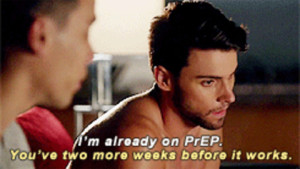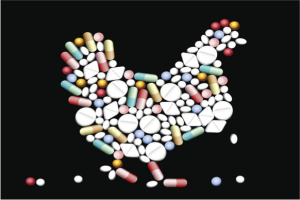(AIDS Memorial Quilt displayed on the National Mall in Washington, DC for XIX World AIDS Conference”)
“People don’t always think in the heat of passion, they just dive on in and deal with consequences later”. These are just a few words Paul Watson wrote on his blog submission to “My Prep Experience” as he goes into depth about his own struggles with having safe sex and his encounter with the new drug Prep. Paul who lives in Cape Town South Africa is just one of many who have shared their sexual experiences. Afraid of contracting Aids/HIV, Paul ventured throughout his life wondering when the day would come where he’d fall to the virus. He wasn’t one to wear condoms at all sexual occasions. Whether with one partner or an orgy, that fear always lingered but he pushed through it. That’s whom he was, and he wasn’t about to change.
His condom use was at roughly 50%. Through his ups and downs he was graced with luck each time he was tested. Yet each time something would eat him up inside. He viewed the people he slept with not for the virus they could carry but for the human beings they were. So why did this fear overtake him? Maybe just maybe it was because there shouldn’t be fear against those with the virus, because there is a possibility of having full protection. This is when he came across Truvada, which is also known as Prep. It changed his life for the better. So now with the use of a condom alongside his daily dosage of the drug, Paul no longer has to worry and he can appreciate those around him.So what does this all mean, are we all Paul? Or does each person have a different story?
It’s the 21st century and we’ve come a long way. We’ve discovered antibiotics, contraceptives, and treatments for certain STIs. So what do all of these discoveries have in common? They are all preventive measures to keep us safe from diseases or critical consequences. For the past century there has been a decline in HIV contraction according to the CDC. This could be due to the fact that the world has begun to truly understand that safe sex is the best sex. Although we have things such as antibiotics and treatments, one of the main preventatives that’s well known for controlling the spread of STI’s and other diseases and that is a condom.
However this winning streak seems to be declining in the past year, not only due to sex education still being considered taboo in certain parts of the united states but also because many Americans still have this belief that certain miracle drugs such as antibiotics can solve all of their problems and because of this, they become careless. That is where the topic of Prep comes to play. Prep is considered to be a new form of HIV preventative. It has come into play for the past two years and has tackled the sphere of sexual activity very quickly. This is due to Prep’s high preventative rate.
Remember Paul and his story? He was one of the lucky few who in the end no longer feared engaging in sex because of his use of both condoms and Prep. Not everyone tends to be Paul unfortunately.
This is what causes a possible breach in the safety we’ve been advocating for in the past decade. Most people would argue that Prep is all you need to have safe sex without a condom. This couldn’t be further from the truth. Prep only has a 90% preventative rate for HIV. That leaves a 10% gap that should be covered if one uses a condom. There are also many other STI’s and diseases that can still be caught that are just as life threatening as HIV.
There are plenty of stories of the positive outcomes Prep has bestowed upon those who struggle with dating someone who’s HIV positive or those who have very sexual lives. As well as certain television shows such as “How to Get Away With Murder” that also advocate for the use of Prep.

While How to Get Away with Murder may have hit the nail right on the head with Prep advocacy as well as showing the struggle of HIV. Some personal stories on the blog My Prep Experience varies when it comes to the Prep and HIV experience. Although many argue that Prep has allowed them to be sexually active without fear again, there are some who blatantly disregard the fact that they aren’t being as safe as they can be. This is where the controversy can be found. What happens when a herd mentality is introduced into an already stigmatized situation?
Safety is threatened and could all but dissipate. To truly achieve the possibility of preventing HIV and stopping a repetition of the “Aids outbreak” in the 80’s we as a people must be progressive as how we view safe sex. It’s not just one pill that will make a difference. There are many steps we’ve yet to achieve and it’s been estimated that for us to really get to the goal of wiping away the epidemic that the HIV virus has caused will be around 2030. Most people from the 80’s will have aged and gone on with their lives. New generations will be ushered through and it’s up to them to take initiative and educate themselves on all of the ways to prevent infection and not just solely rely on one.
(UNAIDS graph on preventatives and targets to reach the end of the AIDS epidemic.)
“Don’t worry I’m on Prep” is a phrase that has taken many communities by storm and unfortunately the more it trends the less progress we can make. Whether it is at a club, bar, at a university, or even at home. Wherever and whoever you have sex with. Being 100% safe is advocating for progression. Believing prep is the answer to an epidemic that has rooted itself into the lives of so many is irresponsible. I would know, I’ve been subjected to it myself. I’ve had people tell me “put down the condom it’s 2016”. In return I’ve had them leave with a lecture and a new date: 2030.
So the next time you hear that phrase or consider taking Truvada, remember to be progressive. Recall all of the things that truly go into being safe. As Paul from my prep experience puts it “For the first time in years, here is something other than a condom that can prevent HIV infection. Use the two together and you could almost swim in HIV body fluids and still be safe (ok maybe not really, but it was a thought).”
WRT 205/Spring 2016 Grading Rubric: Unit III NYTs Magazine
[1] I believe my title hones in on the two issues at hand. HIV awareness and the use of Prep. The lede grabs the user by introducing a piece of someone’s personal story (Paul): People don’t always think in the heat of passion, they just dive on in and deal with consequences later”.
[2] My intro is once again based on the personal experience of Paul and his struggle with HIV awareness and Prep use. It really addresses the controversy of my topic while at the same time exhibiting exigency and showing how dire the issue is.
[3] Exploring the statistics behind HIV and also who advocates for it were ideas that I thought required further analysis and I came up with a lot of information that the typical person would not know about if they didn’t look it up.
[4 My argument is very straight forward yet the issue itself is a complex one. My use of primary research with personal stories as well as secondary research such as CDC statistics and referencing shows that advocate for my issue all tie together and help push the uniqueness and evidence IN style.
[5] I of course discussed the issue of well why shouldn’t people use Prep. I made it clear that Prep is a great advance in HIV prevention but that the issue at hand is how people are using it irresponsibly and how that deters from its purpose.
[6] I believe you can see my research and persuasive stance from looking over the other questions I’ve answered. I even went as far as to include my own experience with the topic.
[7] I used many visual sources, primary research was based around personal stories, and my secondary research spanned from tv shows to the cdc, and other aids advocacy programs.
[8I pushed the research I made alongside the personal stories aspect of my article showing how both go hand on hand but also complicate one another.
9 The use of personal stories (including my own) as well as reaching out to the reader that this too affects them even if they don’t know it I believe shows how persuasive my article is as well as my use of rhetorical tools.
[10 I used examples of the tv show I mentioned, graphs and tables that addressed some of the statistics. Some of my visuals were meant to tug at your heart. Especially the gif of oliver crying because he’s positive with HIV.
[11 I truly wanted to hone in on how HIV was still important and how the advocacy behind it isn’t as relevant anymore. I also wanted to really address Prep use in a more constructive way as my peers suggested I needed to add more content to that issue and expand upon who uses it and who advocates for it.
[12] How well does the writer use hyperlinks—are they effective/appropriate? I hyperlinked each and every one of my sources.
[13 My grammar is always edited twice before I submit my work in all of my classes. My style flows well and uses the research at hand in a practical way.





